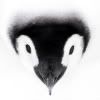Giant Rabbit Fossil Found: Biggest Bunny Was "Roly-Poly"
With no predators on its Spanish island, rabbit was evolutionary "beach bum."

Illustration courtesy Meike Köhler
Published March 22, 2011
The Easter bunny came early this year for a few scientists working on the Spanish island of Minorca (see map).
The team has just announced the discovery of Earth's biggest known rabbit species, an oddly unbunny-like giant dubbed Nuralagus rex—"the Minorcan king of the hares."
The 26-pound (12-kilogram) prehistoric species was about six times bigger than the common European rabbit, found on most continents, according to an analysis of several bones. Study leader Josep Quintana is no stranger to giant Minorcan rabbit fossils, though it took a while before he knew exactly how big a find he'd uncovered.
"When I found the first bone I was 19 years old, I was not aware what this bone represented. I thought it was a bone of the giant Minorcan turtle!" said Quintana, a paleontologist at the Institut Català de Palentologia in Barcelona.
The animal, which lived about three to five million years ago, had several "odd" features that have never before been seen in rabbits, living or extinct, according to the study.
For one, the giant rabbit's "short and stiff" vertebral column meant it couldn't bunny hop. And the relatively small sizes of sense-related areas of its skull suggested that the animal had small eyes and stubby ears—a far cry from modern rabbit ears (see picture.)
"I think that N. rex would be a rather clumsy rabbit walking," Quintana said. "Imagine a beaver out of water."
Despite its oddities, N. rex has many skull and teeth features found in rabbits—meaning there's "no question" it's a rabbit, according to Brian Kraatz, an expert in rabbit evolution at the Western University of Health Sciences in Pomona, California.
"Really, this is a rather typical rabbit head [albeit large] stuck on an atypical rabbit body," said Kraatz, who was not involved in the study.
Giant Rabbit Was Early "Beach Bum"?
The newfound rabbit's "roly-poly, tanklike" appearance and weird anatomy may have arisen because of its stress-free lifestyle, Kraatz added.
That's because the megarabbit had no predators on Minorca—a luxury that allowed the species to evolve to be bigger and more sedentary he said. Modern rabbits are small, spry, and have sharp vision to escape predators.
"He was probably on an evolutionary vacation," said Kraatz, like an "islander beach bum."
Yet, even though the giant rabbit "didn't have too many cares or worries," Kraatz said, "he got too comfortable, and eventually went extinct."
The new giant-rabbit fossil study appeared in the March Journal of Vertebrate Paleontology.
Source--
Got Penguins?
Penguin News Today
The Science of Penguins
The Gentoos are back! Come see them on live cam at:
Gentoo Penguins of Gars O'Higgins Station, Antarctica

__._,_.___
No comments:
Post a Comment